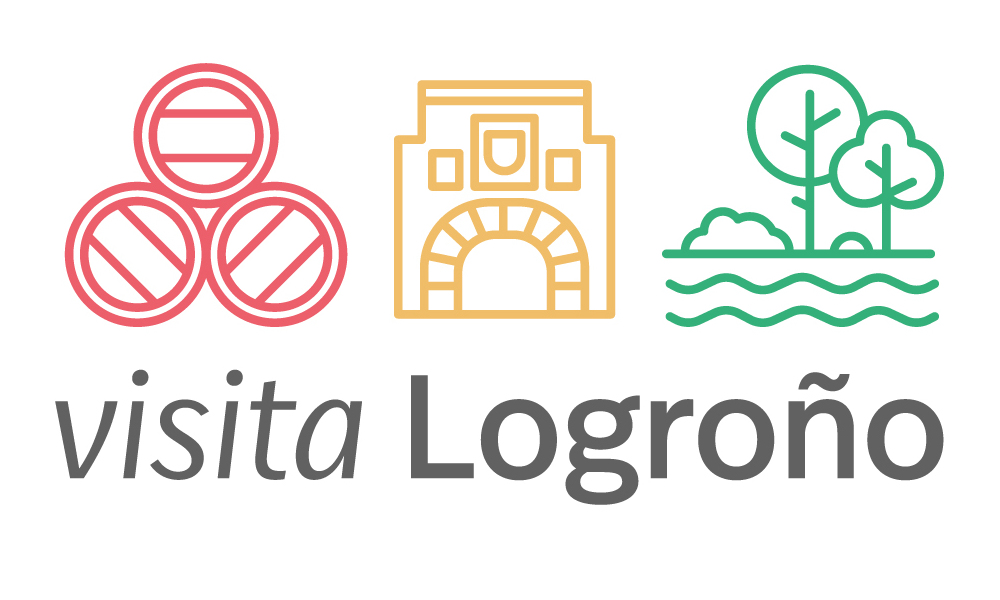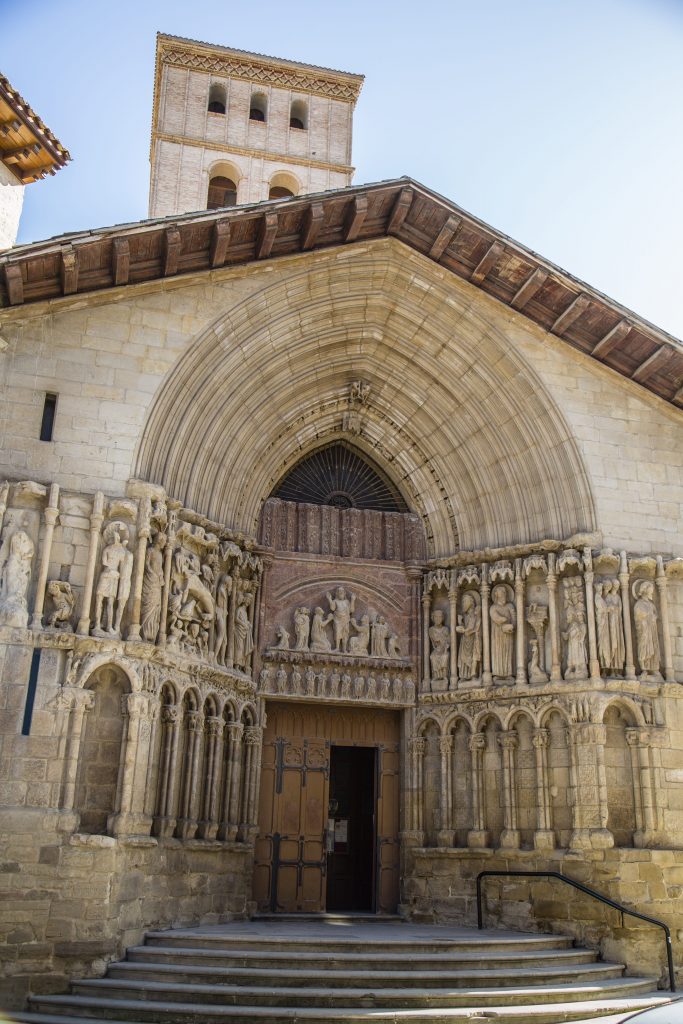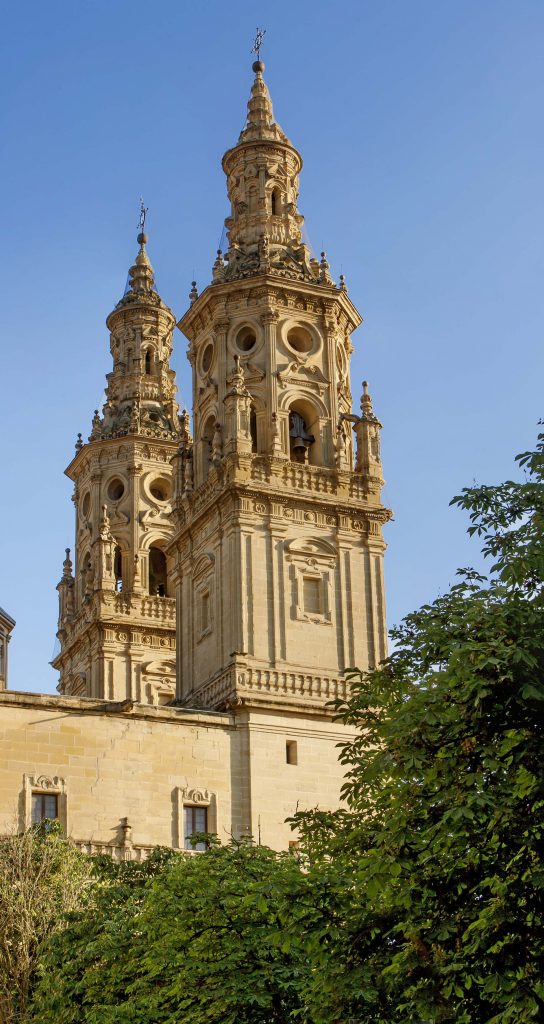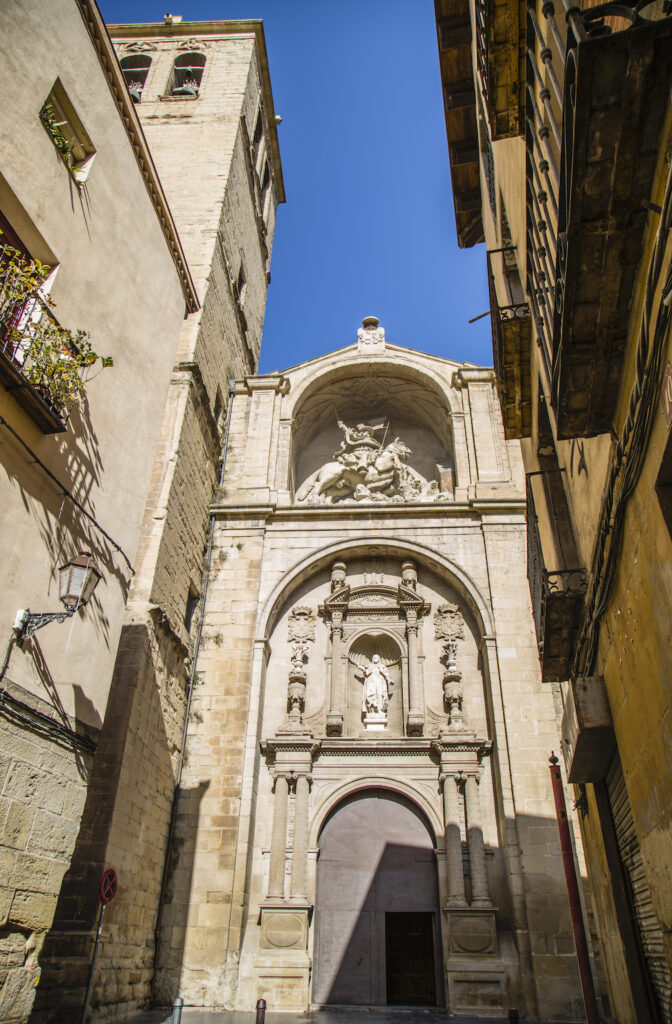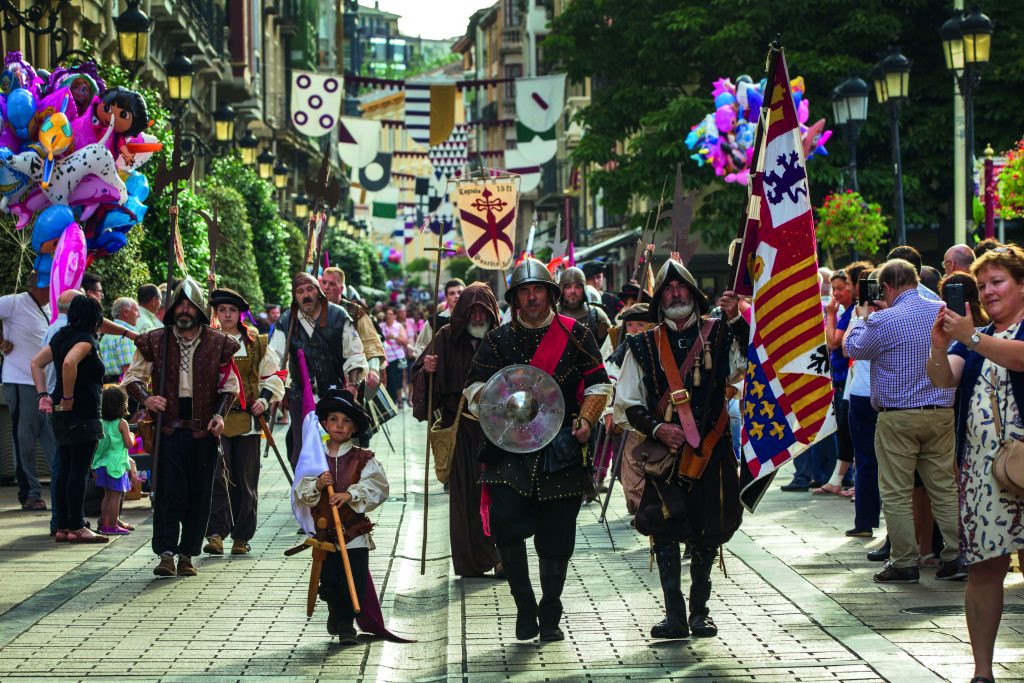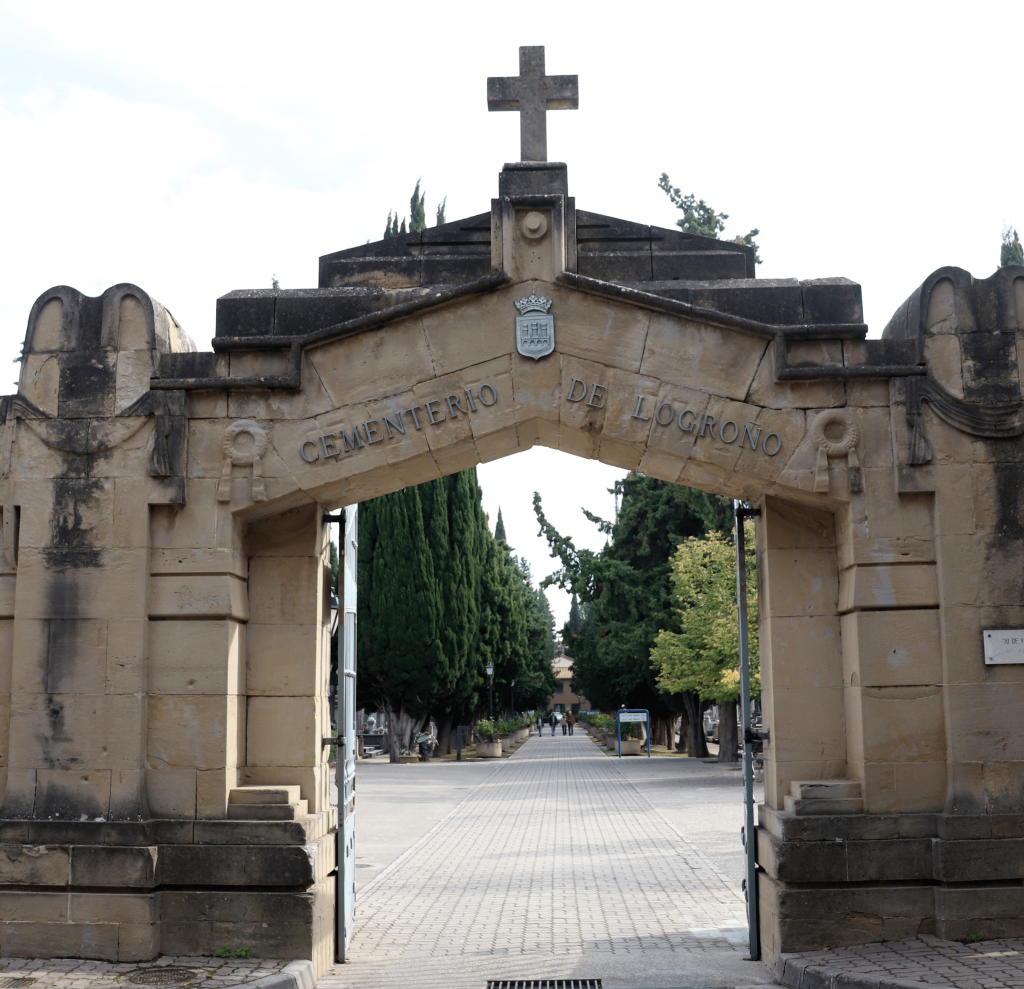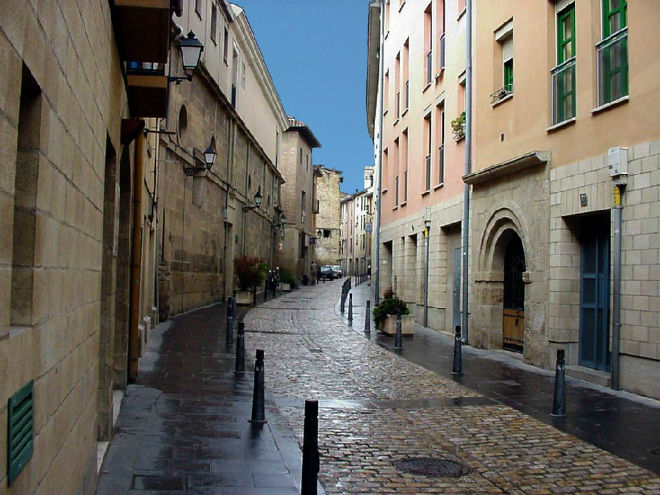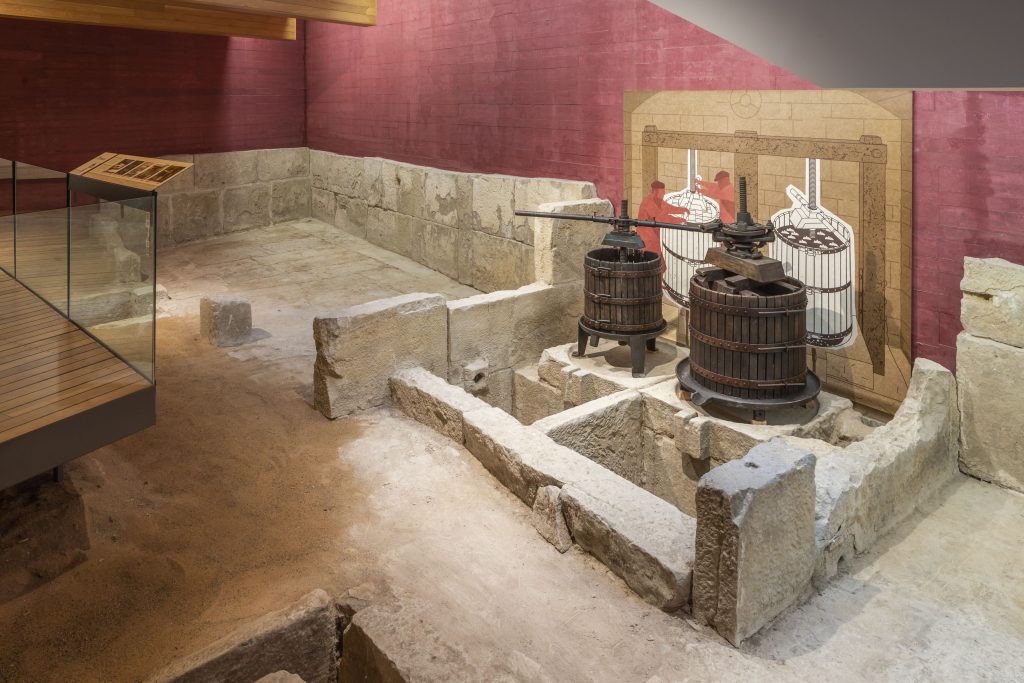Like any stop on the Camino, the capital of La Rioja has churches that are full of interest. Today we would like to take you on a tour of the city’s historic centre through its five best-known churches.
Let’s assume that you follow the Camino de Santiago and arrive in Logroño by crossing the Puente de Piedra (Stone Bridge). If so, just turn right into Calle Ruavieja and you will reach the Ermita de San Gregorio without too much effort.
It is a modest building which was first built in the 17th century, demolished in the 1970s, and reopened in 1994. Compared to other churches, this one may seem more discreet, but it is particularly dear to the people of Logroño, and not just because Pepe Blanco dedicated a song to it.
The hermitage owes its name to Gregorio Ostiense, bishop of Ostia, the port of Rome, who came to La Rioja in the 10th century to combat a plague of locusts with his miraculous powers.
His success in this work and the fact that he remained in Logroño until the day he died make this place, dedicated to him, an essential stop on our tour.
If, after passing the chapel, you turn into Travesía de Palacio, you will arrive at the church that shares its surname with this street. This is Santa María de Palacio, an “imperial” church that owes its name to the fact that it was built over the former palace of King Alfonso VII of León.
Famous, among other things, for its Gothic-style pyramidal spire – one of the most important symbols of the city – the church was begun in the 12th century and is the only one in the city to retain a cloister.
Inside, the main altarpiece was sculpted in the mid-16th century by Arnao de Bruselas, a Spanish artist of Flemish origin. It includes biblical images such as the Tree of Jesse, the Ascension and the Last Supper.
Resisting the temptation to walk along the pleasant Calle Mayor, which tempts the visitor with the monumental graffiti reminding us that “El camino de Santiago se hace por (e)Tapas”, you should continue along Travesía de Palacio, turn left into Calle Herrerías and then right into Calle de San Bartolomé, where you find the church of the same name – St Bartholomew.
The first thing you will notice is the large and impressive entrance. Its hybrid style blends the monumentality of Gothic with the evocative simplicity of Romanesque in a perfect combo that only gets better as you walk through the church.
The high point of the visit – literally – is the ascent of the bell tower that presides over the church, where you can enjoy impressive views of Logroño, a panorama that includes the twin towers of our next stop: Santa María de la Redonda.
This is a Co-cathedral, as it shares the honour of being the seat of the local diocese with the churches of Calahorra and Santo Domingo de la Calzada. It was built over a former Romanesque cathedral, probably octagonal, hence its nickname of “la redonda” (the round one).
Nowadays, the adjective does not fit at all. The three naves of equal height that make up the church are long and narrow, lending it the slender Gothic image that was in vogue in the 16th century.
Inside you can find objects of great interest, such as the tomb of General Espartero – the man who could have been king but didn’t want to be – and a small canvas of the Crucifixion which, historically, was attributed to the famous Italian Renaissance artist, Michelangelo.
Leaving through the large Baroque door that leads to the Plaza del Mercado, we suggest continuing straight on along Calle Portales until you reach Calle Sagasta, where you should turn right and follow the road towards the river until you reach the junction with Calle Barriocepo, where you will find the last of our stops.
Next to the Iron Bridge and at the beginning of the Ebro Park, James the Apostle, the saint who is to guide our steps to Compostela, poses proudly atop his horse.
You are in front of the church of Santiago el Real, rebuilt after the fire that completely devastated it in 1500 and which houses a statue of the Virgen de la Esperanza, patron saint and mayoress of Logroño, who thanks us for our visit and encourages us to return to the city sooner rather than later.
